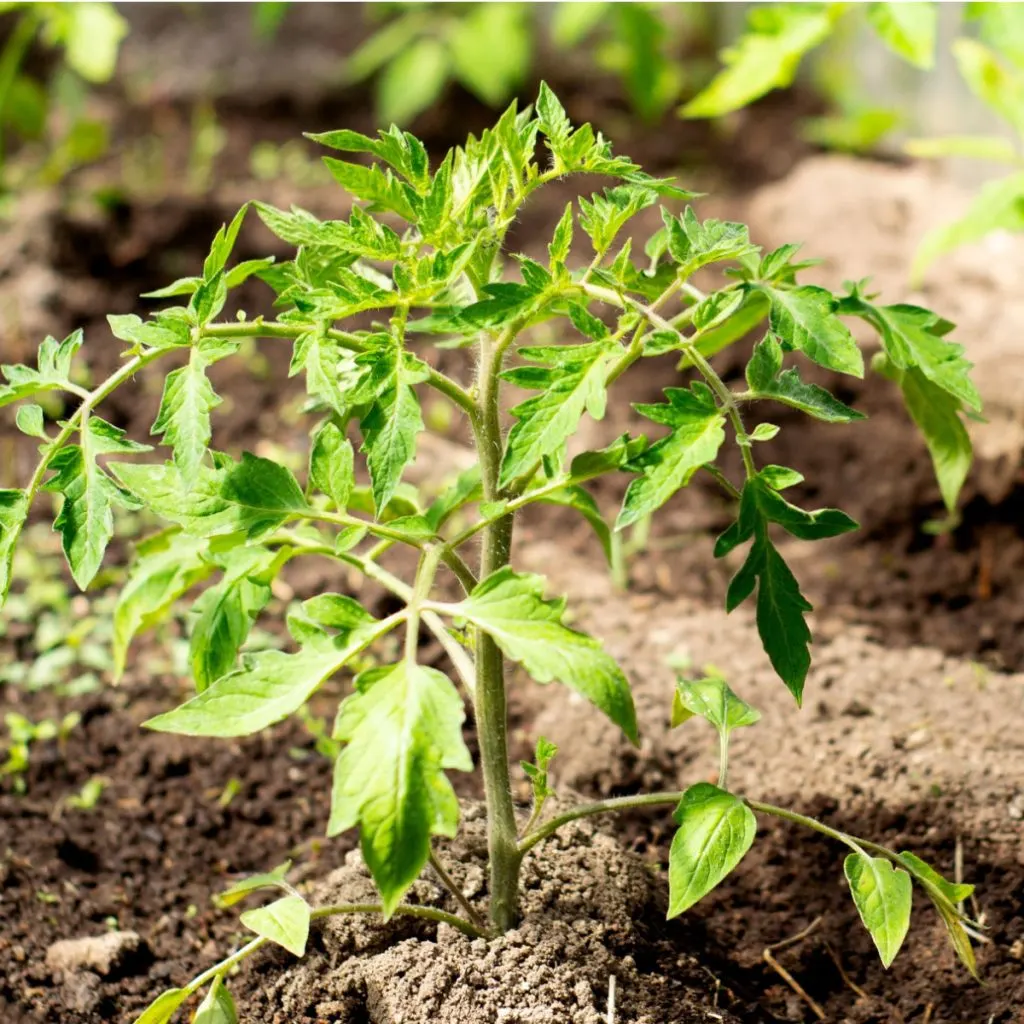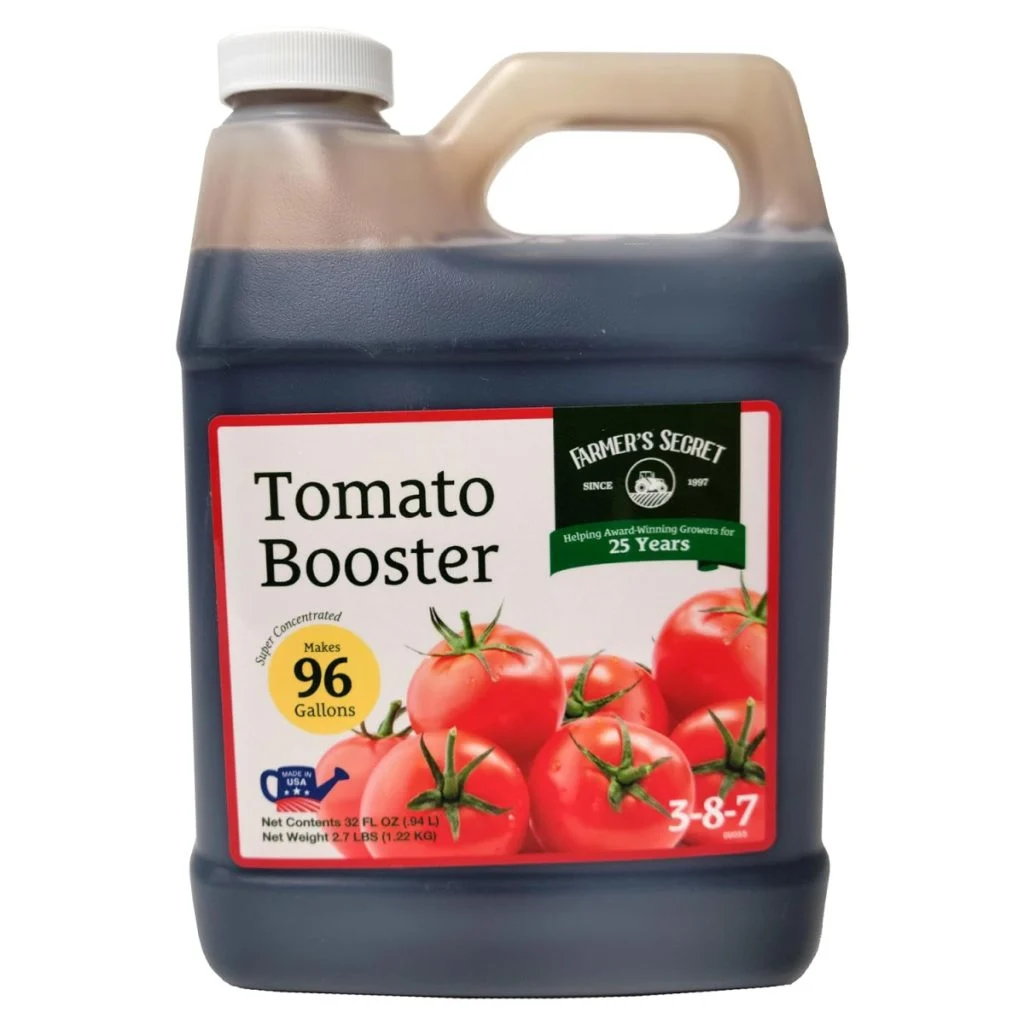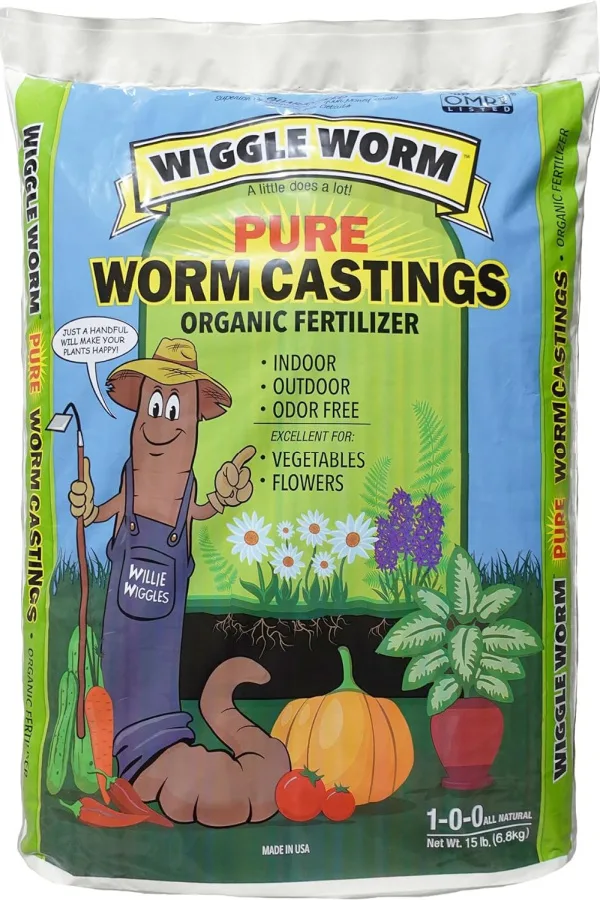Did you know that by feeding your tomatoes with just a couple of important nutrients right now – you can all but ensure they will grow better, faster and stronger than ever – and deliver a great harvest of juicy tomatoes this summer?
If you want to grow healthy tomato plants that produce lots of flowers and big, juicy fruit – then feeding your plants the right way is a must. Tomato plants are extremely heavy feeders. But here’s the kicker – just feeding your plants often isn’t enough. You also need to feed them the right things – and in the right way.
Many gardeners feed their tomato plants early in the season – but then fail to continue the process. But to grow productive plants that stay strong through the heat of summer and continue to produce fruit into fall, tomatoes need a consistent and balanced supply of nutrients. And that’s exactly where knowing what and how to feed them right now can make all the difference.

2 Things You Should Be Feeding Your Tomatoes With Regularly
So what are the two best nutrient sources for tomato plants? As it turns out, two of the best things you can give your tomato plants regularly are a high phosphorous and potassium liquid fertilizer every two weeks – and a monthly dose of worm castings around each plant.
These two simple feeding methods work hand in hand to give your tomatoes everything they need to thrive, bloom, and produce fruit. But more importantly, they do so without causing them to grow too fast or too tall with too many leaves – and not nearly enough tomatoes.
Here’s a closer look at how and why to use both of these feeding methods to help your tomato plants grow better than ever.
#1 – Feeding Tomatoes With A High Phosphorous & Potassium Liquid Fertilizer
One of the best ways to give your tomato plants the nutrients they need fast is by using a liquid fertilizer. Unlike granular fertilizers that take time to break down, liquid fertilizers absorb quickly through both the plant’s roots and leaves. This gives tomato plants an almost immediate boost of energy they can use to grow and produce.
But not all fertilizers are the same. And unfortunately, picking the wrong one can actually do more harm than good. For tomato plants, you want to avoid using fertilizers that are high in nitrogen.

Nitrogen is the first number listed on a fertilizer package. It promotes leaf and stem growth. While some nitrogen is important, too much will cause tomato plants to grow big and bushy. Even worse, at the expense of blooming and fruiting.
Feeding Your Tomatoes With Phosphorous & Potassium
Instead, you want a fertilizer that is higher in phosphorous (the second number) and potassium (the third number). Phosphorous helps plants develop more flowers and sets the stage for fruit production. Potassium helps the plant grow strong roots and boosts overall health and a resistance to stress.
A good tomato fertilizer should have at least half of the amount of nitrogen to phosphorous and potassium. As for how to apply, use liquid fertilizer every ten to fourteen days once your tomato plants have been in the soil for at least a week. Affiliate Link: Farmer’s Secret Tomato Booster Fertilizer (32oz) – Super Concentrated – 3:8:7 Ratio
It’s important to feed consistently to keep the nutrient levels steady. This is the best way for the plant to concentrate its energy on regular blooming and fruiting. It’s a steady rhythm that helps the plants keep pushing out new blossoms and fruit without growing too tall or top-heavy.

#2 – Applying Worm Castings Monthly Around Each Plant
Although the consistent dose of liquid fertilizer is excellent for feeding tomato plants, you can also help power them even better with worm castings. Liquid fertilizer gives tomato plants a fast-acting boost, worm castings, meanwhile, work in a completely different way.
Castings break down slowly, providing a gentle and steady stream of nutrients over time. They’re a natural, organic way to improve your plant’s soil and provide low and slow feeding that helps plants stay strong and productive. See: How To Use Worm Castings To Fertilize Tomato Plants
Worm castings are the manure of worms. Even though they look almost like fine soil, castings are full of beneficial nutrients, microbes, and trace minerals that plants need. What makes castings so great is that they’re not just a source of food for plants – they also improve the structure and health of the soil.
For castings, apply about one cup of worm castings around the base of each tomato plant every month. Gently scratch the castings into the top layer of the soil when applying. When you water or it rains, the nutrients in the castings then slowly release into the root zone of your plants.
What Castings Do…
This steady feeding helps support strong root growth. And the stronger the root system, the better the plant can take in nutrients and water. Strong roots also help your plants handle stress, like heat waves or dry spells.

Worm castings also contain beneficial bacteria and enzymes that help improve soil life. These microbes help break down organic matter and make nutrients more available to the plant. Healthy soil life means healthier plants and better tomato production.
Another big benefit of worm castings is that they won’t burn plants. Unlike chemical fertilizers that can damage roots if over-applied, worm castings are gentle. Affiliate Link: Wiggle Worm 100% Pure Worm Castings.
How The Two Feeding Methods Work Together
The real power comes from using both liquid fertilizer and worm castings in combination. The liquid fertilizer gives your plants quick energy to boost blooms and fruit, while the worm castings provide a constant supply of gentle nutrients to support healthy growth and strong roots.
Think of it this way: the liquid fertilizer is like a quick meal that gives your plant the fuel it needs right away. The worm castings are more like a slow-release snack that keeps the plant fed between meals.
By feeding your tomato plants every ten to fourteen days with liquid fertilizer and once a month with worm castings, you create a balanced and consistent feeding plan. This keeps your plants strong from top to bottom, encourages better bloom sets, and leads to more ripe, full-flavored tomatoes over a longer season.
Here’s to feeding your tomatoes this year with the perfect one-two punch of power. And to your best harvest ever!
I Grow Tomatoes
Follow Our Facebook Page For Even More Great Tomato Growing Tips! I Grow Tomatoes Facebook Page
I Grow Tomatoes is a website created for those who love all things about tomatoes – from planting and growing – to cooking and canning! We publish two articles every week, 52 weeks a year. Sign up today to follow via email! This article may contain affiliate links.
